Workbench - Part 2: Metal work | |
|
 This installment deals with the wagon vise components. The photo shows how the parts are assembled to create the sliding rails. All bars and the sliding plate have the same thickness.
This installment deals with the wagon vise components. The photo shows how the parts are assembled to create the sliding rails. All bars and the sliding plate have the same thickness.
 To build a rail mark and drill holes in one of the outer bars. Clamp this bar to the other bars and drill the holes through the remaining two. This way they all line up perfectly. I welded the bars together but it is also possible to join them with bolts and nuts. Use countersunk bolts. You must also add 4-5 holes to attach the rails to the underside of the bench top with lag screws.
To build a rail mark and drill holes in one of the outer bars. Clamp this bar to the other bars and drill the holes through the remaining two. This way they all line up perfectly. I welded the bars together but it is also possible to join them with bolts and nuts. Use countersunk bolts. You must also add 4-5 holes to attach the rails to the underside of the bench top with lag screws.
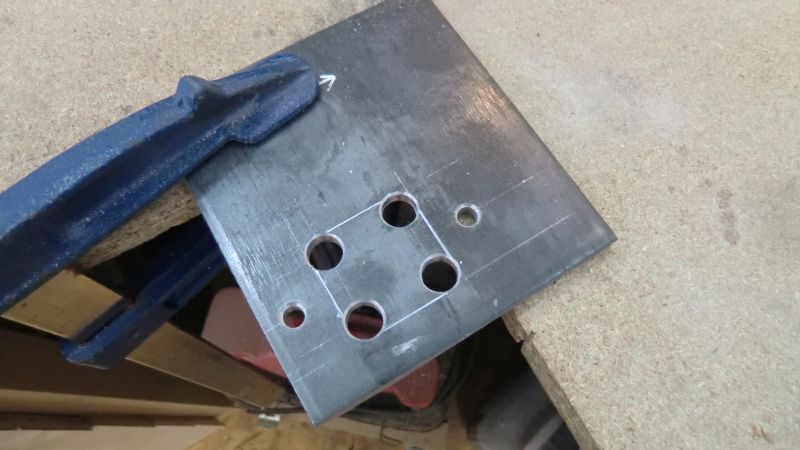 The sliding plate needs a hole for the bench dog. In my case dogs are round with 20mm diameter. If you don't have a 20mm diameter metal drill bit you can use a series of smaller holes and cut the rest away with the jigsaw and a metal blade.
The sliding plate needs a hole for the bench dog. In my case dogs are round with 20mm diameter. If you don't have a 20mm diameter metal drill bit you can use a series of smaller holes and cut the rest away with the jigsaw and a metal blade.
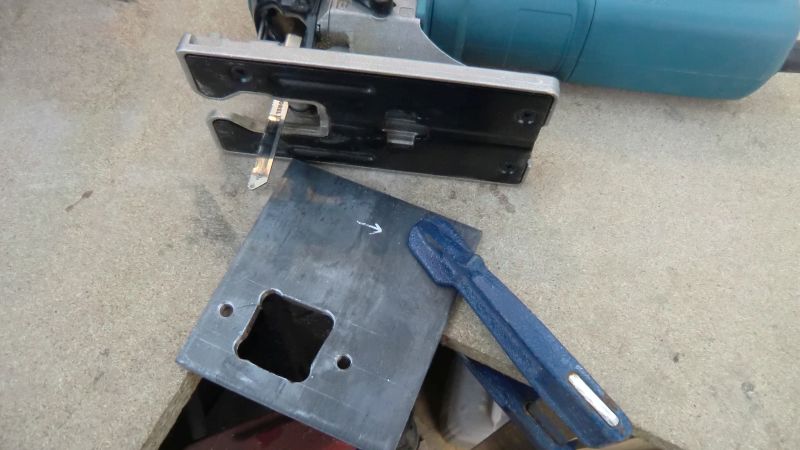 Here is the hole in the plate after being cut. Its actual shape is unimportant.
Here is the hole in the plate after being cut. Its actual shape is unimportant.
 The edges should be filed smooth. Notice that there are 2 additional holes at the sides to attach the wooden block that holds the travelling bench dog.
The edges should be filed smooth. Notice that there are 2 additional holes at the sides to attach the wooden block that holds the travelling bench dog.
 Here are the rails attached to the underside of the bench. Standard woodscrews are not the best choice. You should use lag screws which are thicker and stouter. I used those to attach the wooden block.
Notice that I welded an ACME nut to the plate and painted everything to prevent rust.
Here are the rails attached to the underside of the bench. Standard woodscrews are not the best choice. You should use lag screws which are thicker and stouter. I used those to attach the wooden block.
Notice that I welded an ACME nut to the plate and painted everything to prevent rust.
 You can now prepare the crisscross parts for the leg vise. Use the same method to cut them as with the flanges.
You can now prepare the crisscross parts for the leg vise. Use the same method to cut them as with the flanges.
 To provide more strength, the metal bars get another layer of smaller bars. They can be welded in place or attached with bolts and nuts.
To provide more strength, the metal bars get another layer of smaller bars. They can be welded in place or attached with bolts and nuts.
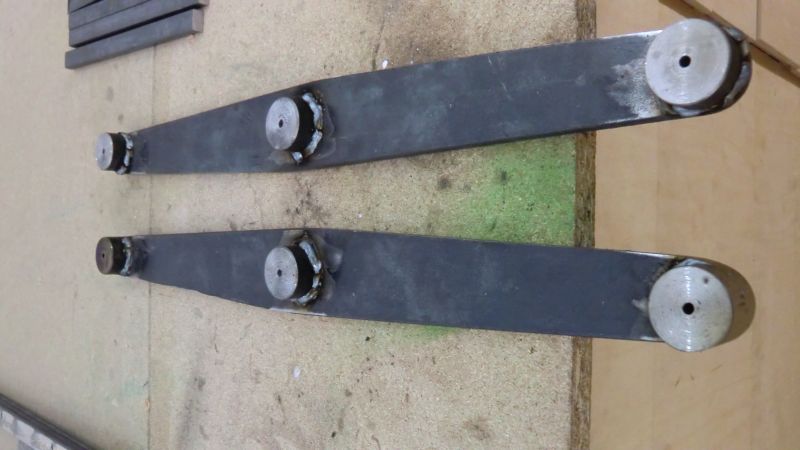 To have longer bearing holes I welded pieces of 30mm round bar in place.
To have longer bearing holes I welded pieces of 30mm round bar in place.
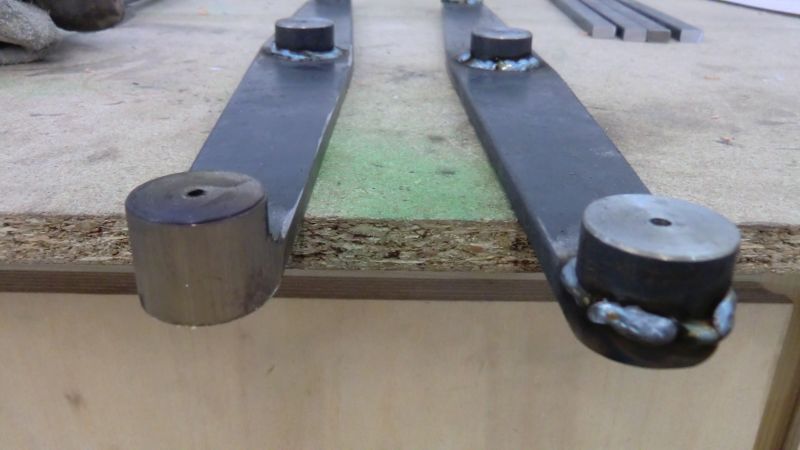 I rounded the edges with the belt sander, you can also use the angle grinder. Right bar viewed before grinding, left bar after grinding. The holes are about 8 - 10mm depending on the bolts you have in stock. You need two bolts to attach the crisscross to the bench and the leg vise and also a bolt with lock nut to attach both parts of the crisscross to each other.
I rounded the edges with the belt sander, you can also use the angle grinder. Right bar viewed before grinding, left bar after grinding. The holes are about 8 - 10mm depending on the bolts you have in stock. You need two bolts to attach the crisscross to the bench and the leg vise and also a bolt with lock nut to attach both parts of the crisscross to each other.
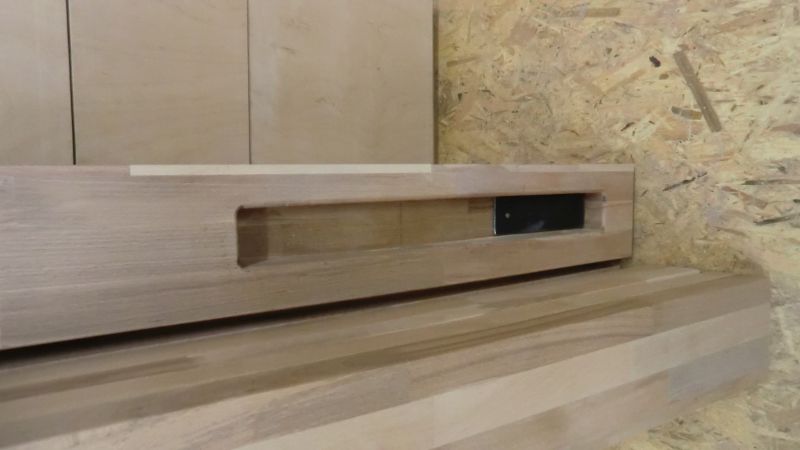 There are metal plates screwed into the lower end of the bench leg and the leg vise. This keeps the crisscross from rubbing against wood when operated. These plates are kept in place with just one small woodscrew.
There are metal plates screwed into the lower end of the bench leg and the leg vise. This keeps the crisscross from rubbing against wood when operated. These plates are kept in place with just one small woodscrew.
 I also used plastic spacers in each rod to avoid lateral shifting.
I also used plastic spacers in each rod to avoid lateral shifting.
[ Part 1
| Part 2
| Part 3
| Part 4
| Part 5 ]
| |
| [ back ] |